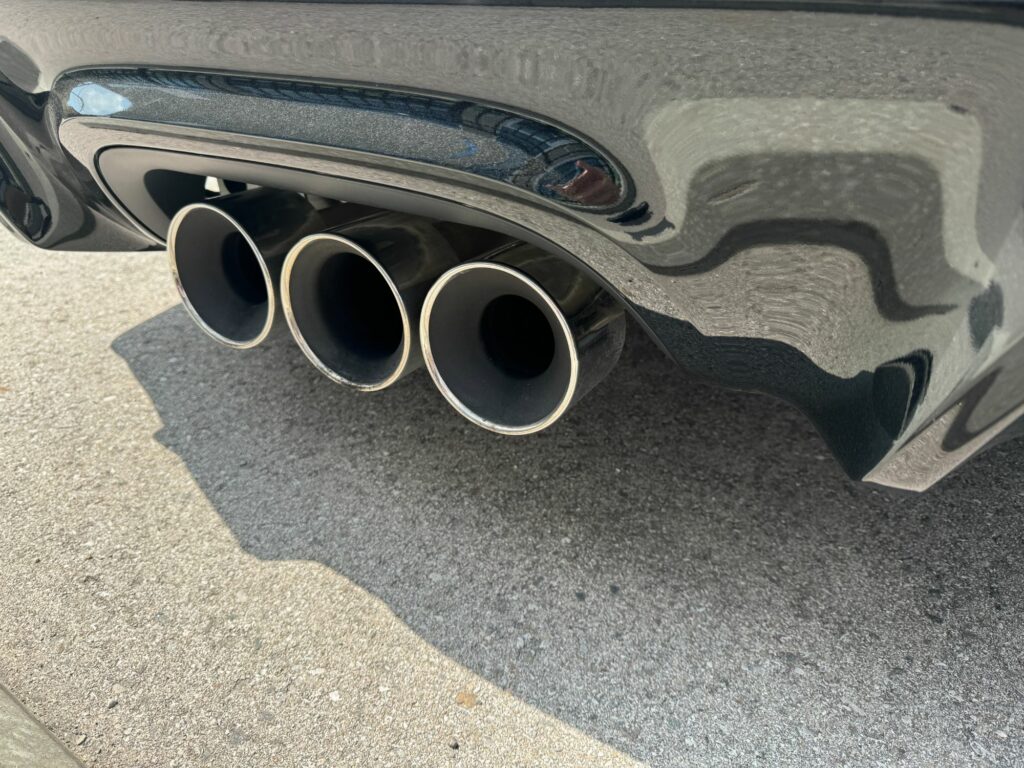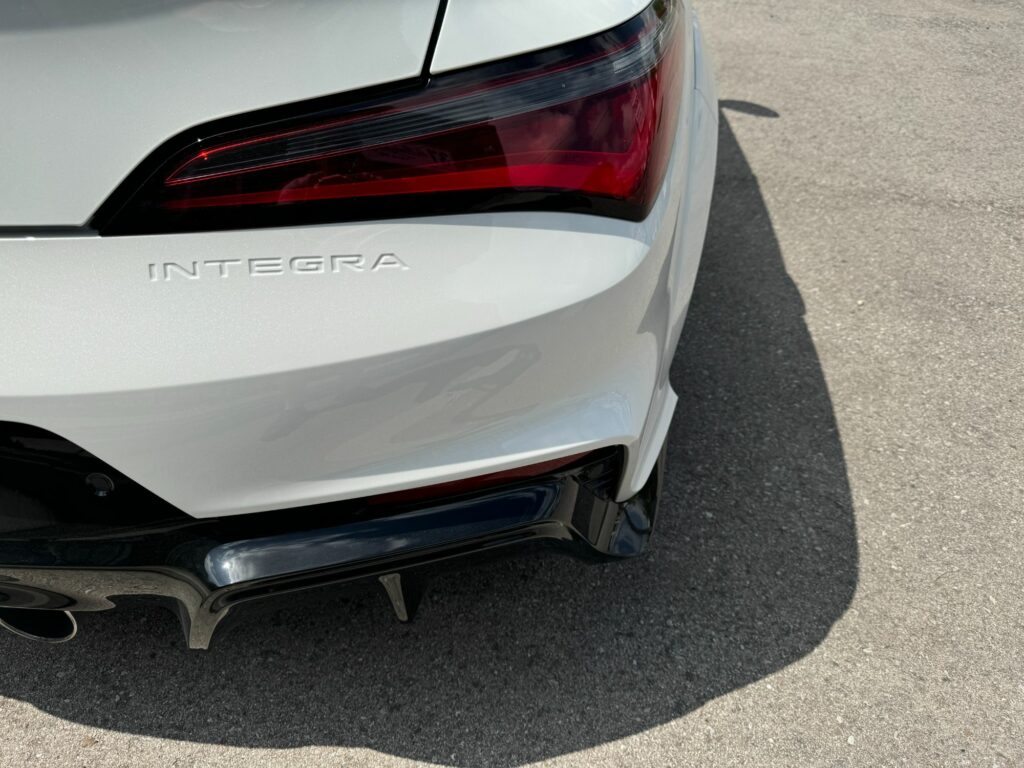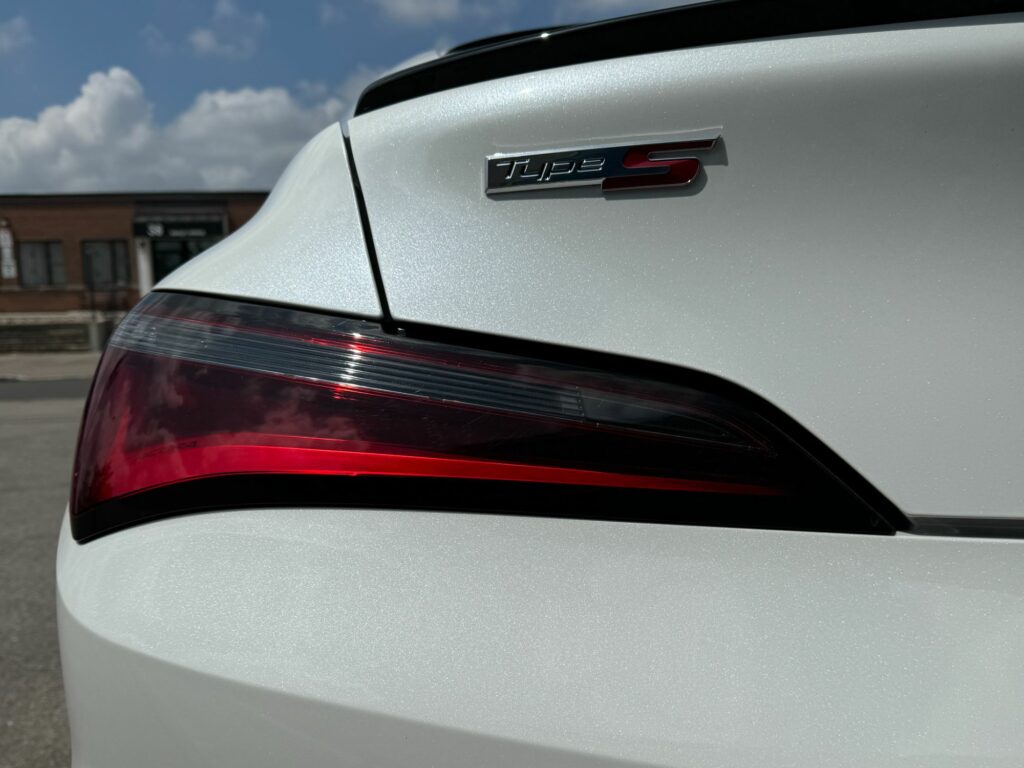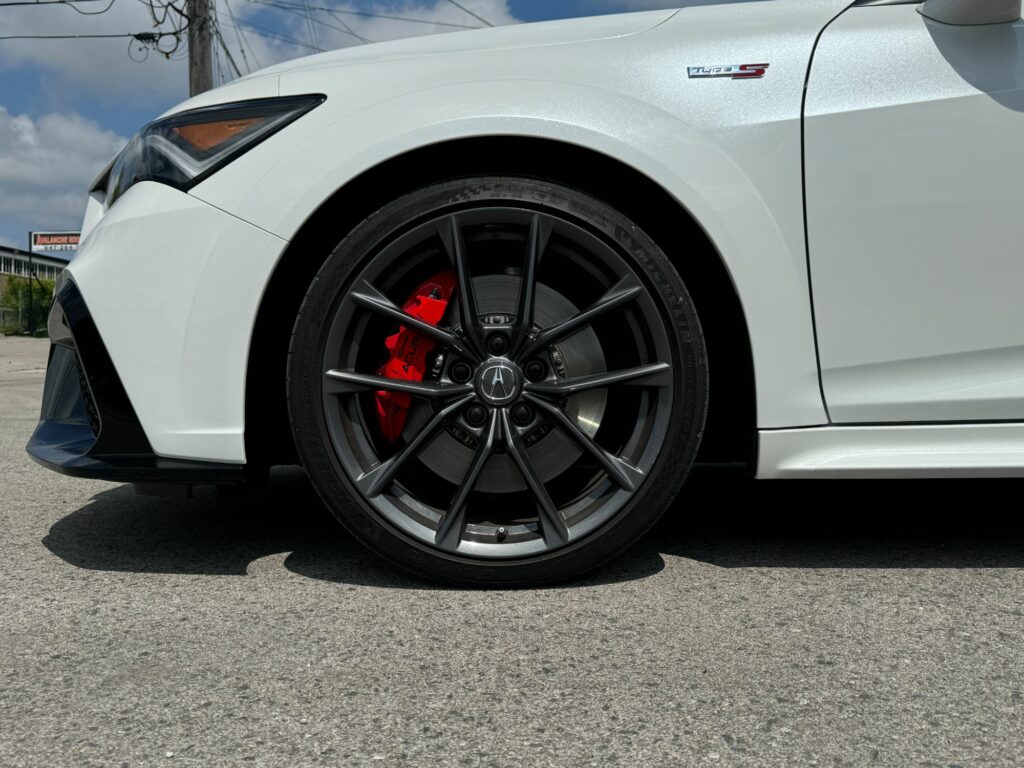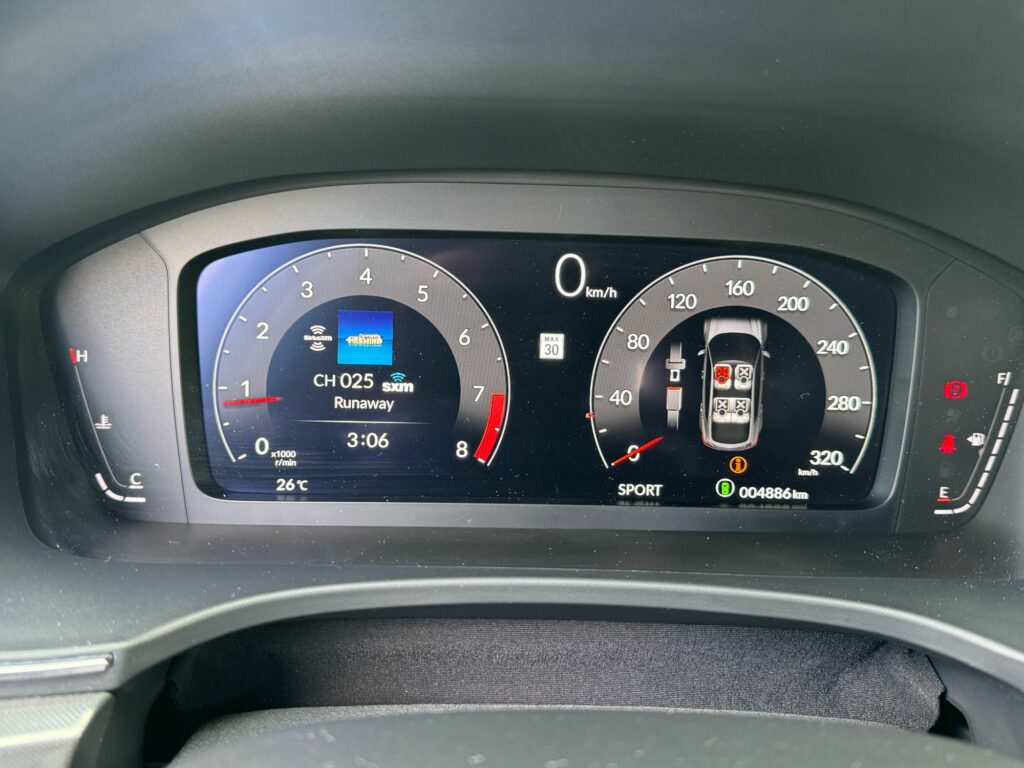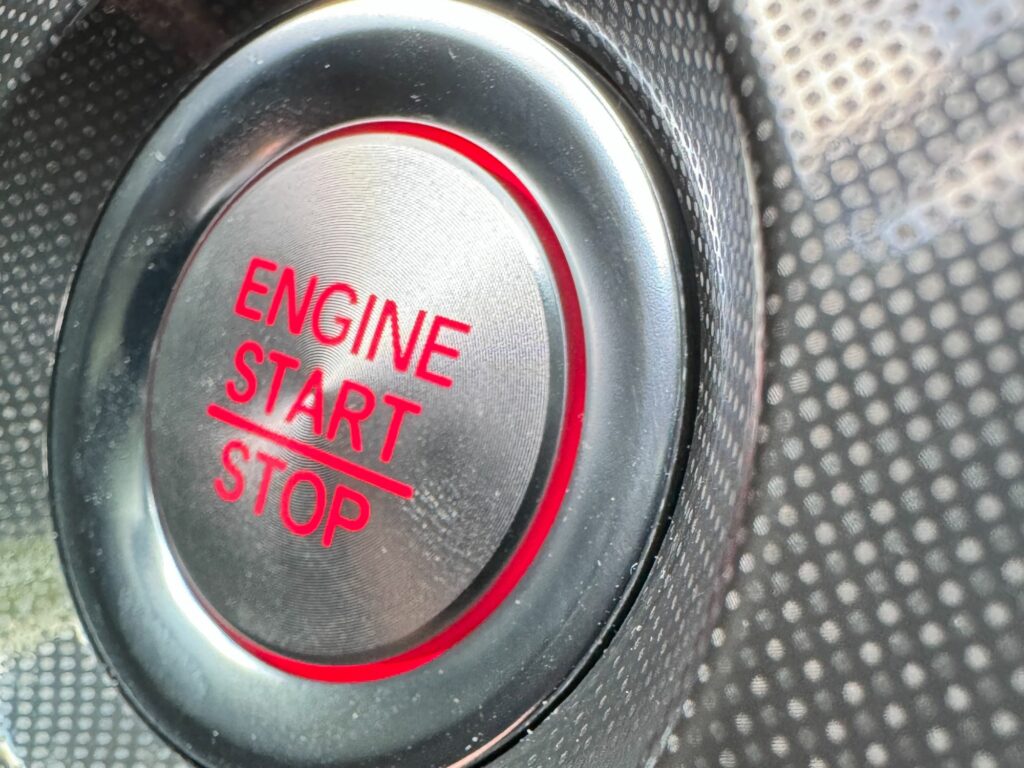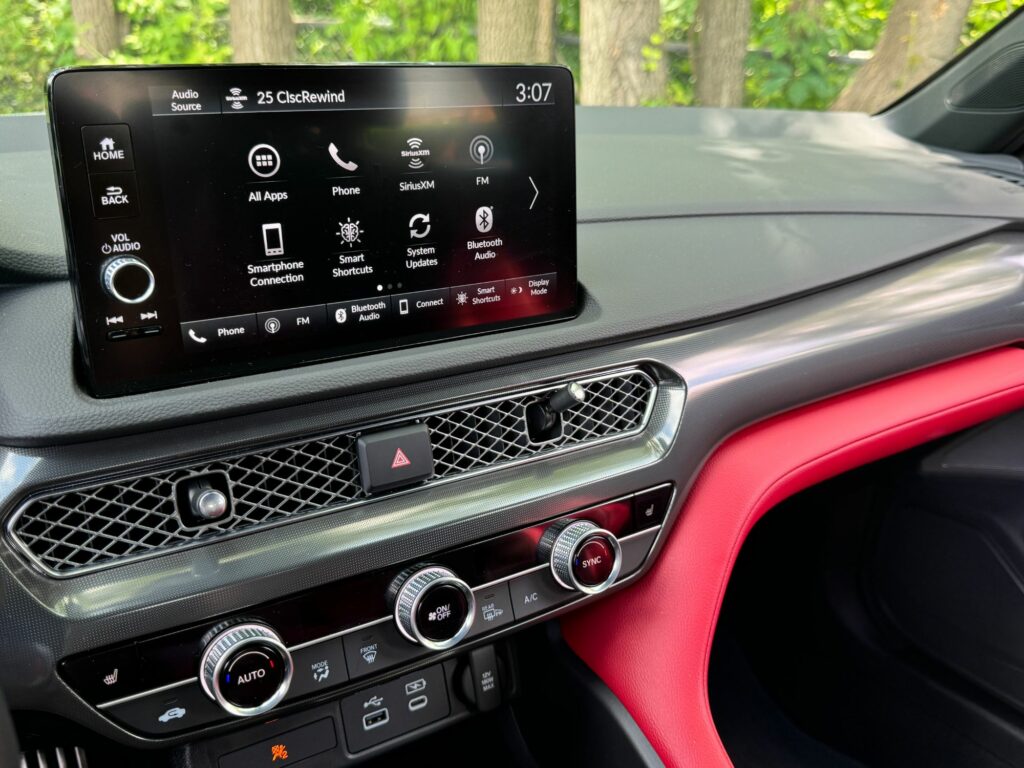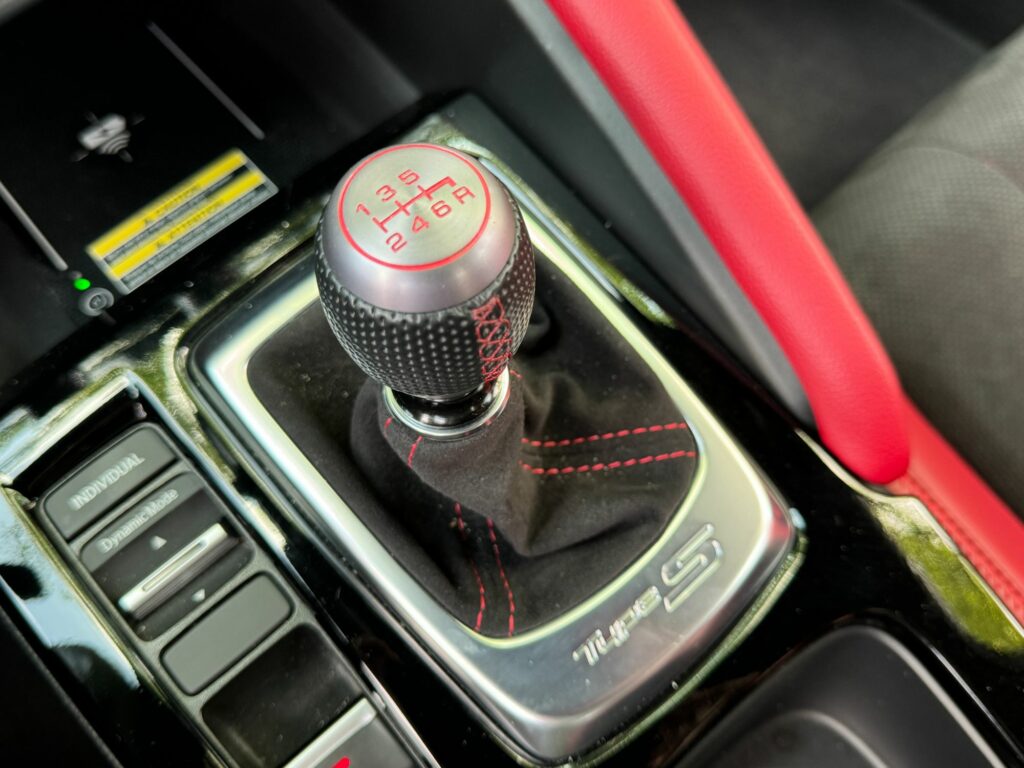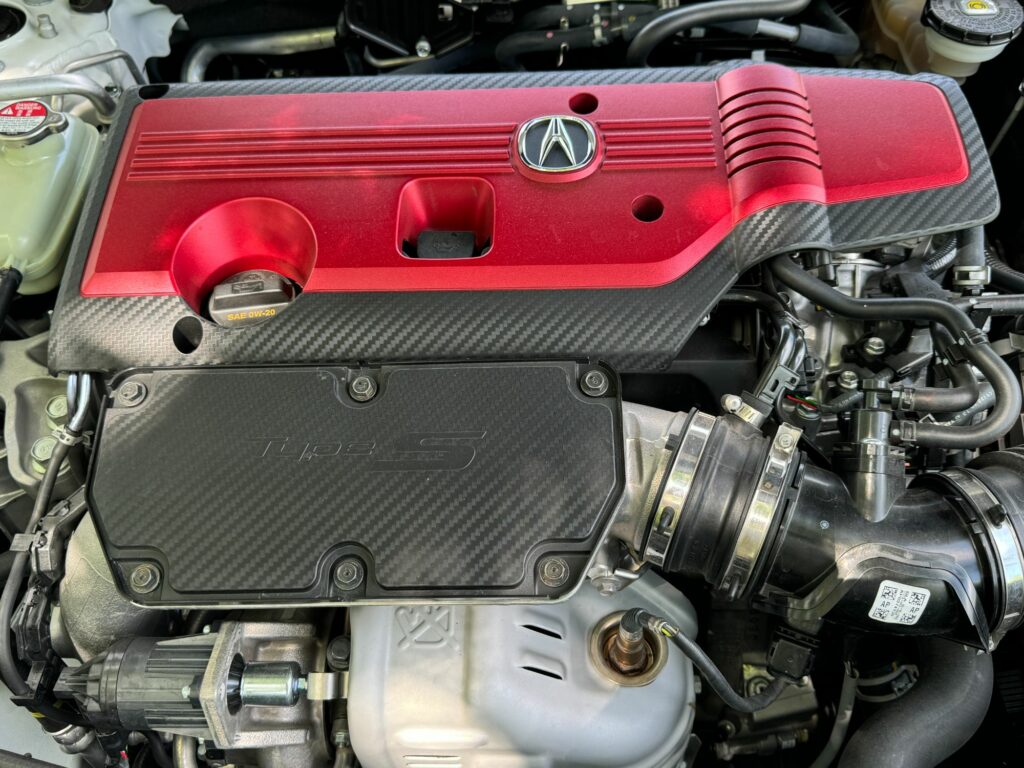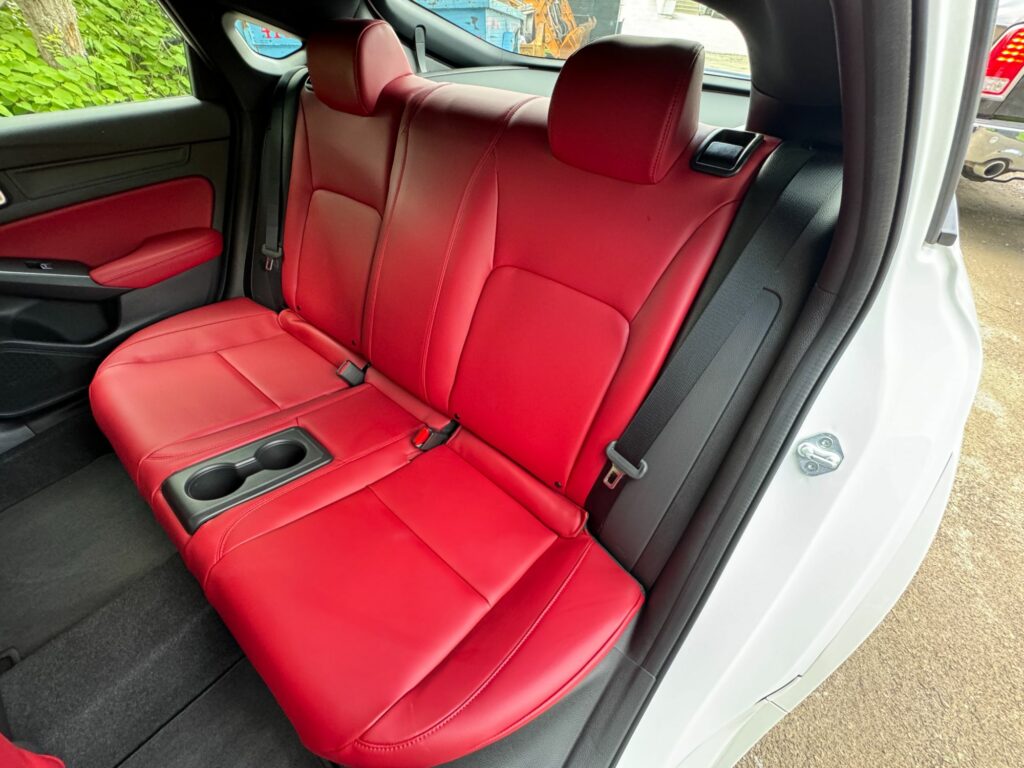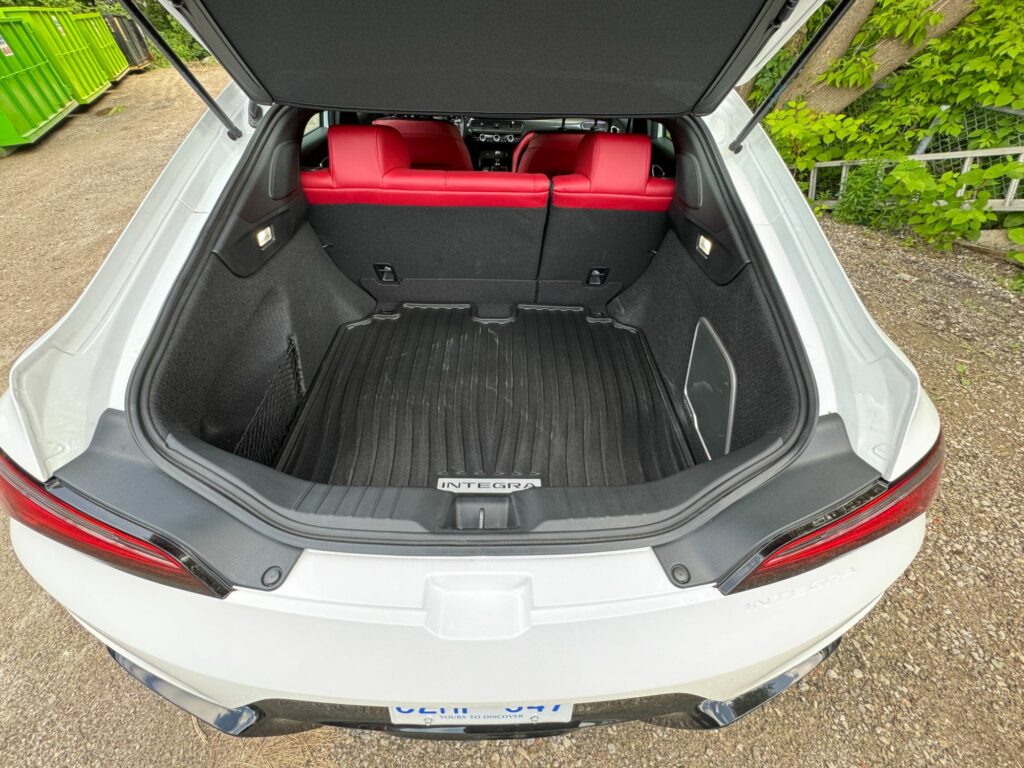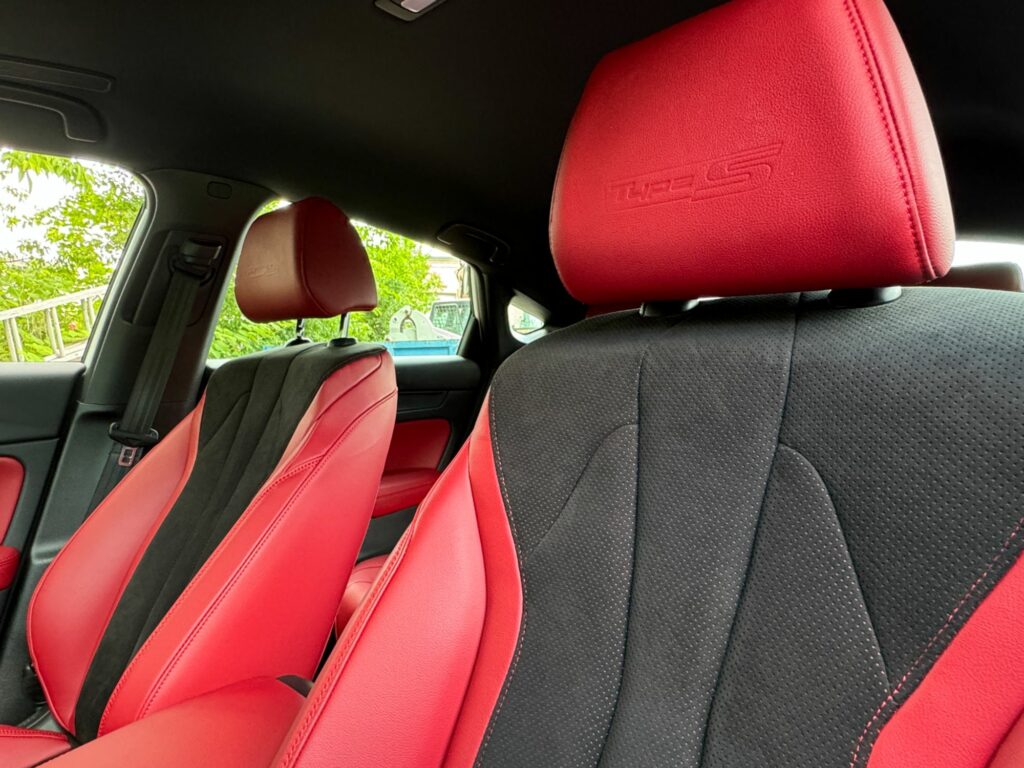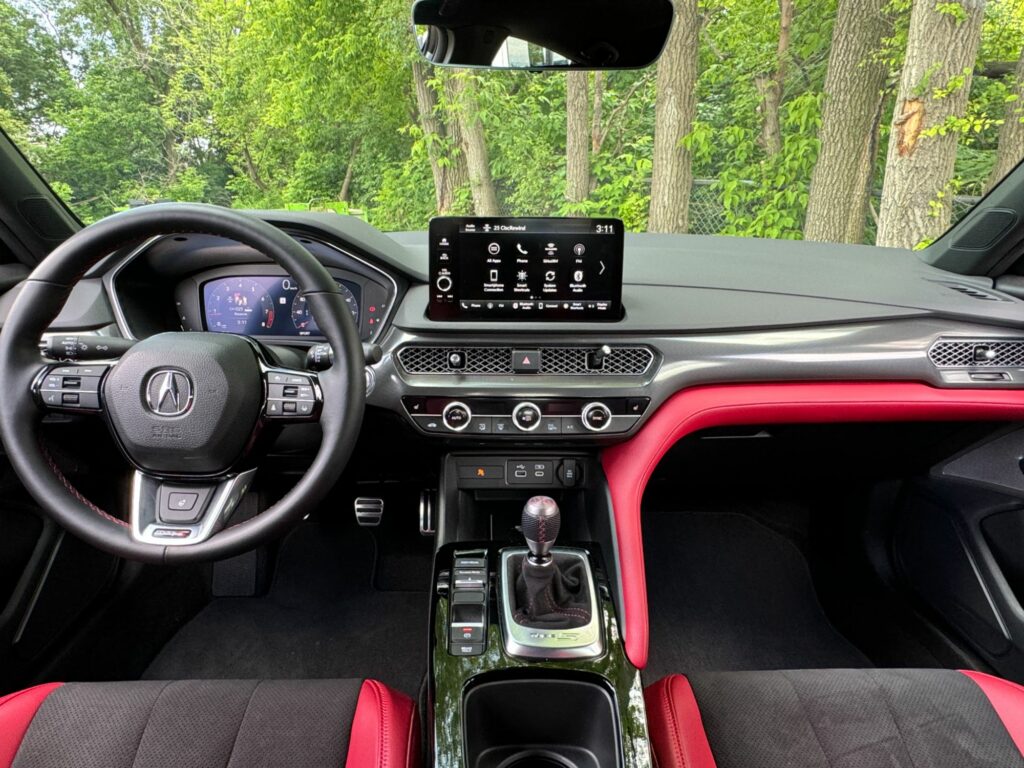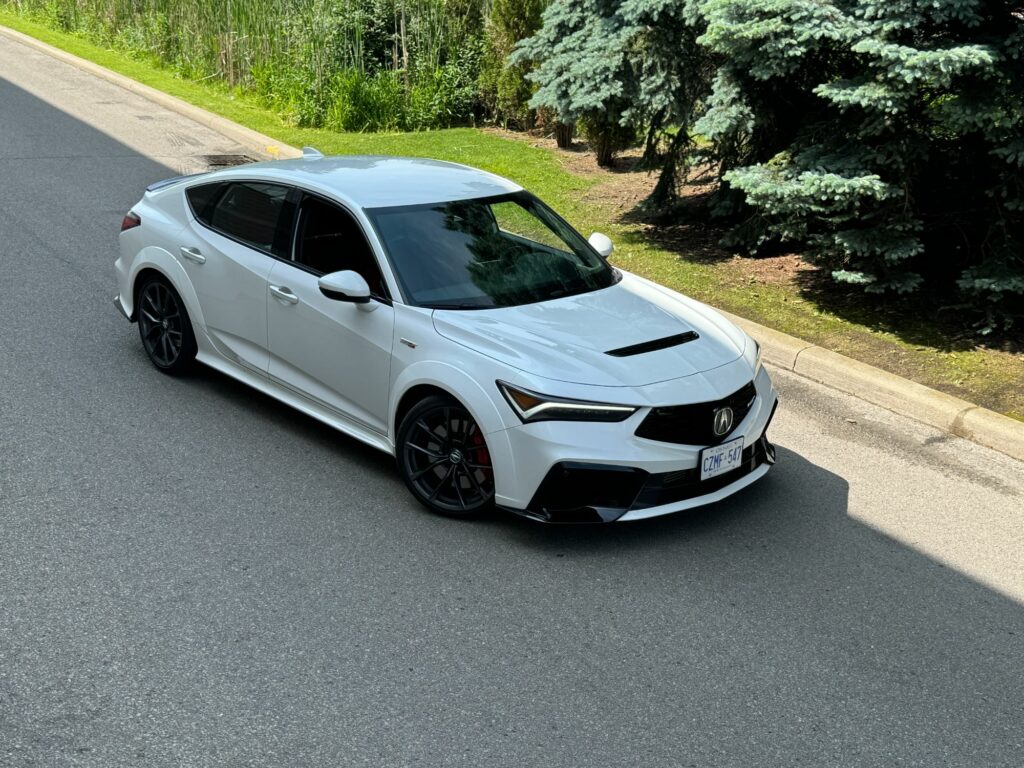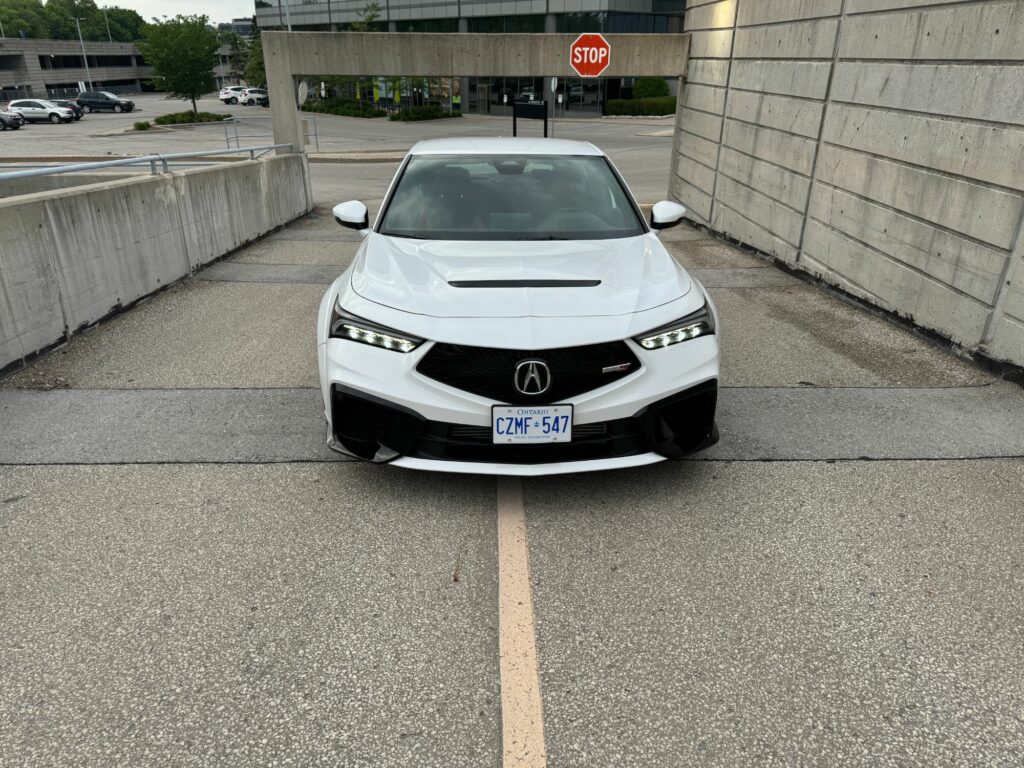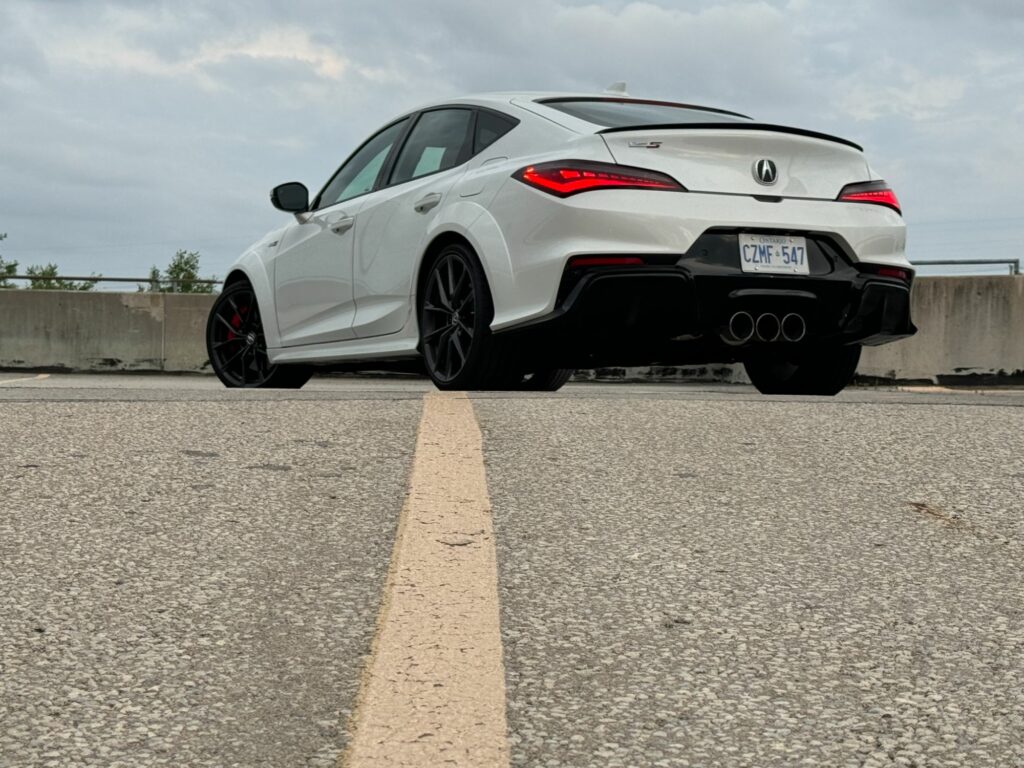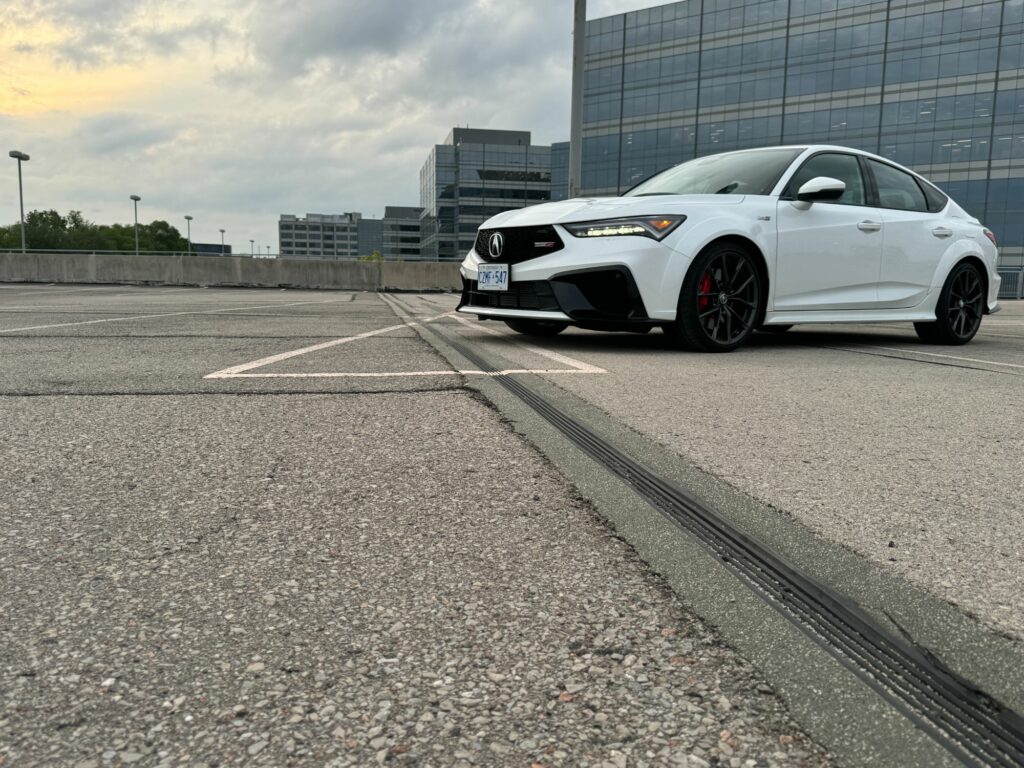Words by: Adam Allen
“Now that you’ve driven both, how does the Acura Integra Type S compare to the Civic Type R?”
That question repeated itself countless times during the tenure of the hottest ‘Teggy whilst sojourning in the Carpages Garage; rabidly expectant enthusiasts just had to know how the two compared, and ultimately which one was best. We’ll arrive at an answer to the latter shortly, but the former’s answer is abundantly clear: these two are very special cars and each are mind bendingly great in their own way- you really can’t go wrong choosing one or the other. Yet as we’ll see, each car excels in its own unique way.
Let us begin by refreshing your memory of the hard points on these two closely related cars. When the Type R came out, the good folks at Car and Driver stated that it was “Unfathomably brilliant, with no ‘for a front-driver’ qualifier needed.” With no trick all-wheel drive system employed, Honda’s dogged determination to stay with a front wheel drive layout and bend it to their engineering whims is on full display. Most manufacturers mumble a ‘good luck with that’ while they figure out a way to make their front biased AWD systems behave like a rear driver. Honda’s engineering trickery uses a technology they call dual-axis strut front suspension which not only virtually eliminates torque steer but gifts the cars their installed on an almost unbelievable handling proficiency. Throw in a gifted limited slip differential and you have a tandem that serve up almost unbelievable handling pedigree. Seriously, the way this car bites on turn in and changes direction is borderline shocking and there are many competitors that would be left in the dust of these two around a racetrack.
Sending power to the ground through this trick setup is a turbocharged four-cylinder engine that makes 315 horsepower in the Type R with our Acura benefiting from a small power bump to 320. We admit that it’s hard to notice the difference, but what is noticeable is the change in soundtracks. The Honda has a reedy, almost kazoo like tone while the Acura sounds deeper and slightly more menacing, even providing some theatrical pops and bangs in Sport+ mode that the Civic does not. Both have teeny weeny fuel tanks but make the most of them, returning impressive fuel economy if your mindful of how deep you delve into the turbo’s boost profile.
Two aspects of these cars that are pleasingly identical are the transmissions and brakes. Both feature one of the greatest gearboxes in any car on sale today, offering a rifle bolt action that is so pleasing you’ll find yourself shifting it just because. And the brakes are not only actuated by one of the most precise feeling pedals in the business but offer tireless stopping power and resolute resistance to fade. To say the engineers did their homework when conceiving these two would be an understatement. Like Porsche has done with their 911 over the decades, Honda has refined this vehicle architecture so well that all the demerits associated with front-wheel drive are no longer relevant.
Actually, there is one more thread of commonality woven into these two cars and that is how easy and approachable they are to drive. Every control operates effortlessly but with millimetric precision and even in full red mist drive mode they still ride mostly comfortably. You sit upright with a commanding, almost SUV-like view of the road and outward visibility is indeed likewise excellent. If anyone questioned the benefits of making a hot hatch based on humble econobox underpinnings, here's where that reward is reaped- they are utterly excellent daily drivers.
Good for you for reading this far, because now the answer to one of the automotive world’s great questions of the moment is going to be answered: which of these two is best?
The Civic Type R is unquestionably the more track focused of the two. It is shod on appreciably more aggressive Michelin Cup rubber which gives it a palpable edge in handling prowess which in turn will undoubtedly manifest itself in the form of quicker lap times. It feels rawer and less refined. It’s serious enough about its sporting mission that the seats have cutouts for a racing harness, and it’s interesting to note that the Type R’s thrones are better bolstered and more comfortable than in the Acura.
The Integra just feels more at home on the street. It’ll hold its own just fine on the track, but the Acura’s greater refinement and polish make it a more friendly conveyance during commutes and road trips. Not only is it quieter, but it has a killer app that you can’t get on the Civic and that is its ELS Studio sound system. It’s easily best in class and is comparable with the listening experience you’ll find in Acura’s much pricier upmarket models.
If you’re thinking that we’re sounding a bit non-committal at this point, well, you’d be right. It’s hard to choose between two pillars of hot hatch perfection, people! Yet we promised an answer to the burning question of which one is best, and we feel an obligation to fulfill that mandate, and so here it is: the Integra Type S is best if you apply a real work/daily driving lens to the decision. It is much easier to live with in the situations normal driving dictates, like navigating annoying rush hour traffic and take a few pals to the golf course. What it surrenders to the Civic Type R in terms of all out performance is negligible, and if you never go near a race track you won’t miss the Civic’s enhanced capability anyhow. It’s exceedingly rare that a modern car can offer so much bandwidth to enthusiasts these days, but the Acura Integra Type S showed us that you really can have it all. Like we said when we concluded the Civic Type R road test which bears repeating: “This one is special, folks- and we’d guess with 100% certainty that this will be a collector’s item for sure. Get yours while you can.”
2024 Acura Integra Type S – Specifications
- Price as tested: $58,826
- Body Type: 5-door, 5 passenger hatchback
- Powertrain Layout: Front engine/front-wheel drive
- Engine: 2.0-litre turbocharged inline 4, DOHC, 16 valves
- Horsepower: 320 @ 6,500 rpm
- Torque (lb-ft.): 310 @ 2,600 rpm
- Transmission: 6-speed manual
- Curb weight: 1,445 kg (3,183 lbs)
- Observed Fuel consumption: 10.2L/100km (23 mpg)

